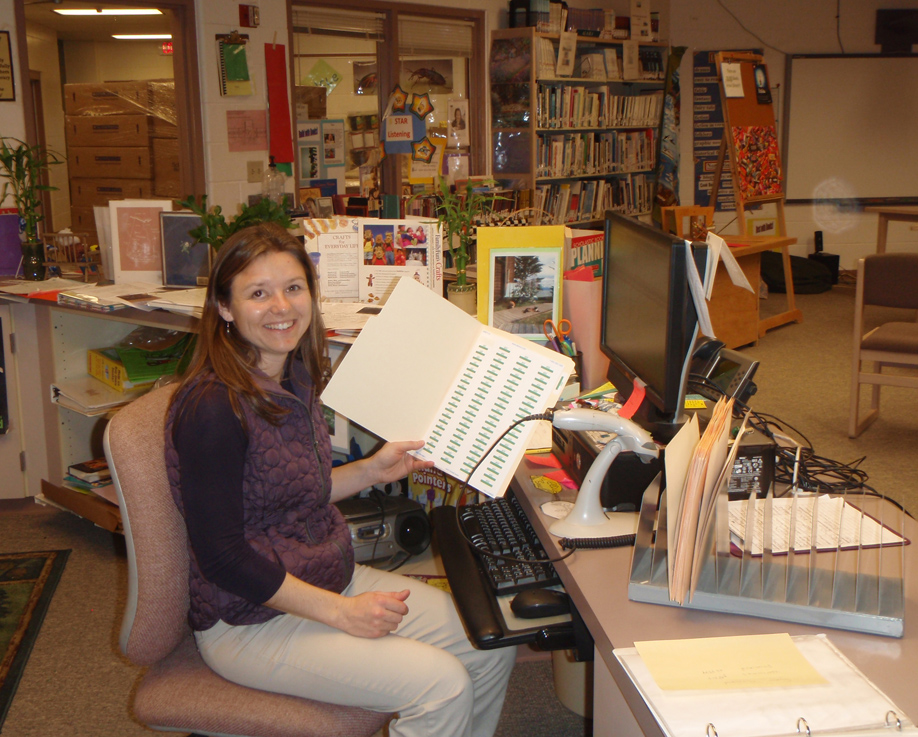A joint effort led by Lisa Whip, librarian at West Homer Elementary School, has created a program that is helping students set their own goals for reading.
“It takes the guesswork out of choosing books at their ability,” said Whip. “If they read at their ability, they can excel.”
The project was built around the Lexile Framework, Scholastic Reading Inventory and Scholastic Reading Counts. It required evaluating the school library’s 20,000 books, matching them to specified levels and labeling them accordingly, something Whip described as “a huge job.”
More than $3,000 was raised for the project, with some donations coming from Delta Kappa Gamma and Homer Kachemak Bay Rotary. More than 40 volunteers including Rotary and DKG members; current and former WHES students; parents; WHES staff; Margaret Reed, reading specialist with the Kodiak Island Borough School District; Kenai Peninsula Borough School District library supervisor Karla Barkman and many other interested Homer residents worked with Whip and WHES aide Cheryl Illg to research, organize and learn computer programs needed to complete the project. Tony Mika and Casey Olsen handled computer needs, while Jean Calhoun, WHES school secretary, kept track of financial and office needs.
“Walk into any classroom, first grade through high school, and ask, ‘What do you need to do to become a better reader?’ and you will hear, ‘You must read a lot.’
“This response is true, but it is only one piece of the whole picture needed for students to grow their reading skills,” said Reed. “Students must (1) practice reading, (2) be aware of the level of text they choose to read, (3) have feedback concerning how well they are comprehending as they practice and (4) know if they are practicing enough to cause growth.”
Classroom libraries at WHES are being included in the labeling and “students have scheduled to take home boxes of labels to label their home libraries,” said Whip.
Student testing that identifies individual reading levels also is part of the project, with the levels entered into the library system so students can create their own book lists based on their reading level and interests.
“(Students) set goals for themselves and read at that level until they move on to the next,” said Whip. “It’s really for kids to own their reading and have fluency. That’s really what it’s about.”
McKibben Jackinsky can be reached at mckibben.jackinsky@homernews.com.


